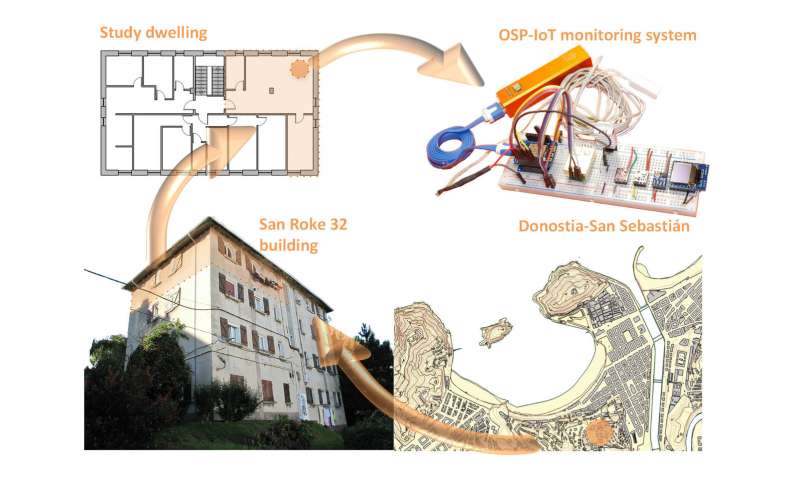A prototype is developed to monitor environmental variables in buildings

The international journal Automation in Construction has just published a paper titled "Environmental monitoring system based on an Open Source Platform and the Internet of Things for a building energy retrofit." It reports on a study carried out by the ENEDI research group of the UPV/EHU-University of the Basque Country on the use of tools based on open source platforms and the Internet of Things.
In collaboration with l´Université Paris Nanterre, the ENEDI research group conducted a study into monitoring buildings by developing measuring equipment and deploying it in the San Roke 32 case study in Donostia-San Sebastian. The property is a reference in the nearly zero-energy building sector (nZEB), because it has been energy retrofitted in accordance with the Passivhaus standard and is one of the case studies in the European EuroPHit programme.
The research focussed on monitoring environmental variables in building by means of a certain type of sensor. Specifically, a prototype of monitoring equipment was built and deployed in the San Roke 32. The solution was also found to be applicable in a range of purposes with other types of sensors (lighting, energy consumption, water consumption, etc.) or actuators (relays, heaters, solenoid valves, motors, etc.), thus opening up the field of application in the building sector and many others.
One of the aims proposed in the research was to overcome the barriers existing in the sphere of monitoring buildings: lack of flexibility for specific measuring needs, interoperability between the equipment and the high cost of acquiring them. So, "we relied on two of the latest, cutting-edge technologies in the Smart sphere: Open Source Platforms (OSP) and the Internet of Things (IoT)," explained Alexander Martín-Garín, lead author of the paper and pre-doctoral researcher. "The former enabled us to develop a piece of monitoring equipment according to the specific needs of the project thanks to the freedom of development allowed by these platforms. And the latter enabled us to manage the information that we were going to gather in real time." This second aspect is that which enables the functioning of the various processes to be optimised and provides the user with information so that he/she can act alone and go a step further by using the "intelligence" of the pieces of equipment so that they act on their own; this is known as "machine to machine" (M2M) communication. In other words, as an example, if the temperature in the abode is lower than 19º C, the sensor is programmed to send an order to the heating system to raise the temperature of the abode to the set-point indicated.
They also managed to show that the interaction between the user and the abode is crucial for achieving good Indoor Air Quality (IAQ). "Using the window opening sensor that had been fitted, it was found that just by having the window open for ten minutes it was possible to achieve a good level of CO2, which is one of the indicators most used in studies of this type," said the researcher. People or combustion systems, such as heaters, turn into the most important emission sources and, if the recommended level of 1000 ppm is exceeded, users may start to experience discomfort inside the abode (headache, fatigue, lack of concentration, etc.).
Due to the importance of this parameter, the current regulations for buildings with respect to IAQ, the HS-3 Technical Building Code, was updated not long ago to be able to meet the low energy consumption requirements currently being demanded in buildings. In general, the renewing of the indoor air is done by a constant flow, thus generating an excess of ventilation and, as a result, giving rise to increased energy consumption. That is why to reduce this consumption, the regulations currently allow ventilation to be made on demand by measuring the level of CO2 in the abode so only the strictly necessary ventilation is carried out.
More information:
A. Martín-Garín et al, Environmental monitoring system based on an Open Source Platform and the Internet of Things for a building energy retrofit, Automation in Construction (2018). DOI: 10.1016/j.autcon.2017.12.017
Provided by University of the Basque Country